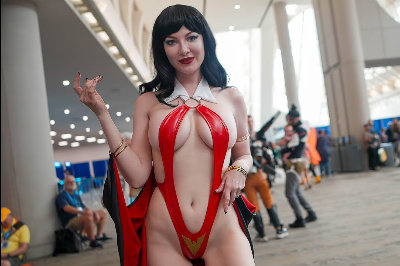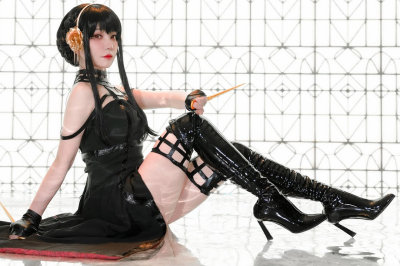Movie Feature by Kris Griffiths
Editor Walter Murch, production designer Dean Tavoularis and actress Aurore Clement talk to PHASE9 about the new extended version of APOCALYPSE NOW.
In May 1979, more than three tumultuous years after production began, Francis Ford Coppola unveiled a ‘work in progress’ cut of his groundbreaking film APOCALYPSE NOW at the Cannes Film Festival. The movie went on to win the Palm d’Or in Cannes, earn eight Academy award nominations including Best Picture, confound doubters with worldwide box office success and became one of the most important and memorable films of the past quarter century.
Starring Marlon Brando, Robert Duvall, Martin Sheen, Lawrence Fishburne, Dennis Hopper and Harrison Ford, the film is a turbulent, hallucinogenic, horrifying and operatic epic. Coppola had sought “to create a film experience that would let audiences feel what Vietnam was like: the immediacy, the insanity, the exhilaration, the horror, the sensuousness and the moral dilemma of America’s most surreal and nightmarish war.” As a loose retelling of Joseph Conrad’s classic novella HEART OF DARKNESS set against the Vietnam war, the story tracks the journey of Captain Willard, a US Army Intelligence officer sent on a hazardous mission up river into Cambodia to terminate “with extreme prejudice” an American renegade colonel named Kurtz who has spun out of control and out of his mind. As Willard makes his way deeper into the jungle, he also seems to surge deeper and deeper into a realm of illusory truth and total madness… and into the darkest shadows of the human heart.
On May 11 2001, again at the Cannes Film Festival, Coppola introduced an entirely new version – wholly re-edited from the original dailies – that includes forty-nine minutes of never-seen-before footage. The film drew an extended standing ovation and overwhelming critical response. This new, definitive version, APOCALYPSE NOW REDUX, is “sexier, funnier, more bizarre, more romantic and more politically intriguing.”
One of the main additions to the film is the much-discussed French plantation sequence, which includes a riverside encounter, the funeral of crew-member Clean, a rancorous dinner, and Willard’s seduction of (and by) Roxanne, a young French widow (played by Aurore Clement). At the dinner, the patriarch of the plantation asks rhetorically: “Why do we stay here? It keeps our family together. We fight to keep what is ours. You Americans fight for the biggest nothing in history.” Aurore Clement comments upon the scene: “I think the plantation really adds something because earlier you have all these scenes of men and fighting and death and war, and then comes this scene about sweetness and life and sensuality and love. It’s one of the rare erotic scenes in a war movie – and it’s a beautifully erotic scene. It’s about the two sides of humanity: the one who loves and the one who kills.”
Coppola’s long-time collaborator, editor Walter Murch, notes: “In 1979, we had tried the plantation sequence as early as after the sampan massacre (eliminating the burial of Clean). In the new version, we let Clean die, we allow a pause as the boat passes the tail of a downed B-52 bomber, and then out of the fog comes this apparition of a plantation.” Murch says entering and exiting this sequence through the fog made him “comfortable with his diversion into the past, with people who had so dominated that part of the world for the last one hundred and fifty years.”
Production designer Dean Tavoularis recalls his search for the perfect setting for the sequence:”I wanted to create something kind of ghostly, a place you barely can believe exists, because they are way up river when they find the French plantation,” he explains. “We built the structure near a river, with a balcony, and then I found a wealthy collector who lent us all kinds of colonial furniture. It has that feeling of lost elegance.”
There is a new scene with Marlon Brando, giving a deeper glimpse into the mind of Kurtz. Here, while holding Willard captive in a metal shed, he expounds upon the insanity of war. He quotes an American intelligence analyst recently returned to Vietnam to sound out the situation for President Nixon. Says Kurtz: “He told the President last week that: ‘Things felt much better, and smelled much better over there.'” Then he asks Willard: “How does it smell to you, soldier?”
The deletion of this scene was one of the last cuts the filmmakers made in 1979, in the interest of time. Murch comments: “just like in Conrad’s HEART OF DARKNESS, the character of Kurtz is only glimpsed. The amount of screen time for Brando is a fine balance between too much and not enough.” Restoring this philosophical scene, in his eyes, “sets up the last scene in the film more effectively.”
The entire process of re-editing the film from the unedited raw footage, including sound remixing, took six months (from March through August of 2000). Murch says “There was a certain part of me that was agitated about going back into the jungle. I had spent two challenging, draining years of my life on this already, and I knew we were up against an original assembly that ran more than five hours, and in dailies some one and a quarter million feet of film – the film and the magnetic track alone weighed seven tonnes. But about ten days into the process, it felt perfectly natural.” This time, Murch was editing the film digitally, creating what he calls “a wonderful juxtaposition of using the latest technology on a film made at the dawn of the modern video era.”
“Only once when we had cut the scenes together for the new version did we go back and look at the original cut to make sure we hadn’t missed anything,” he adds. “The film now has greater continuity on a technical and emotional level – and in terms of character development. It’s more what Francis wrote and intended and couldn’t quite get done twenty-two years ago. Ironically, by adding footage in many places, we managed to make the film feel shorter.”
Murch is famous and much lauded for his mastery of sound effects and mixing. This is due in part to the groundbreaking efforts he and his team made in creating the Dolby 5.1 sound format for the original movie – a format that has become the industry standard twenty years later and won Murch an Academy Award. The film continues to be praised for its highly textured weave of the sounds of modern warfare. “We remastered onto the SRD format, and it was wonderful poetry to return to the 5.1 digital sound with the movie that started it all,” Murch says.
For many of the cast and crew of APOCALYPSE NOW, seeing the REDUX version was a revelation, fulfilling the potential they had originally seen in the film’s epic story. Several saw it at the official screening in Cannes, where the audience gave the film an extended standing ovation. Aurore Clement, who appears in the newly added plantation sequence, says that seeing the new version of the film was “like a dream.” She continues: “It was very emotional, especially when at the end of the screening, the lights came on and many people in the audience were crying. You could just feel people reacting to the power of the story.” For Clement, the emotion was heightened by the fact that her scenes had been cut out of the film twenty-two years ago, yet were now a pivotal part of the film. “I had never seen these scenes, not even when I did the looping for this version,” she says. “This was my very first time seeing what I had done so long ago and it was an extraordinary feeling.”
Production designer Dean Tavoularis was also surprised by the audience’s tears. “You don’t think of this type of film as being a tear-jerker, but I realised what moved people so deeply is that this new version gives a deeper sense of lost opportunity, of a paradise that has been destroyed by dark human impulses. It’s quite moving.” One of the most striking impressions for a contemporary audience is the absence of special effects shots. “There is a realism to this movie that can’t be duplicated with digital effects and computers,” notes Tavoularis. “There’s a texture you get when everything is for real. All those helicopters were not composed or composited. They were all there, criss-crossing, and there’s a real power that comes from that scale.”
APOCALYPSE NOW is a film that endures in modern memory as a classic unlike any other. The film was recently voted one of the top 100 films in American history by a blue ribbon panel of the American Film Institute. “One of the things I’m certain about,” Martin Sheen said in 1979, “is that this is going to be one of the most talked-about films in motion history.” With APOCALYPSE NOW REDUX, the conversation about the film gets a new centrepiece.



